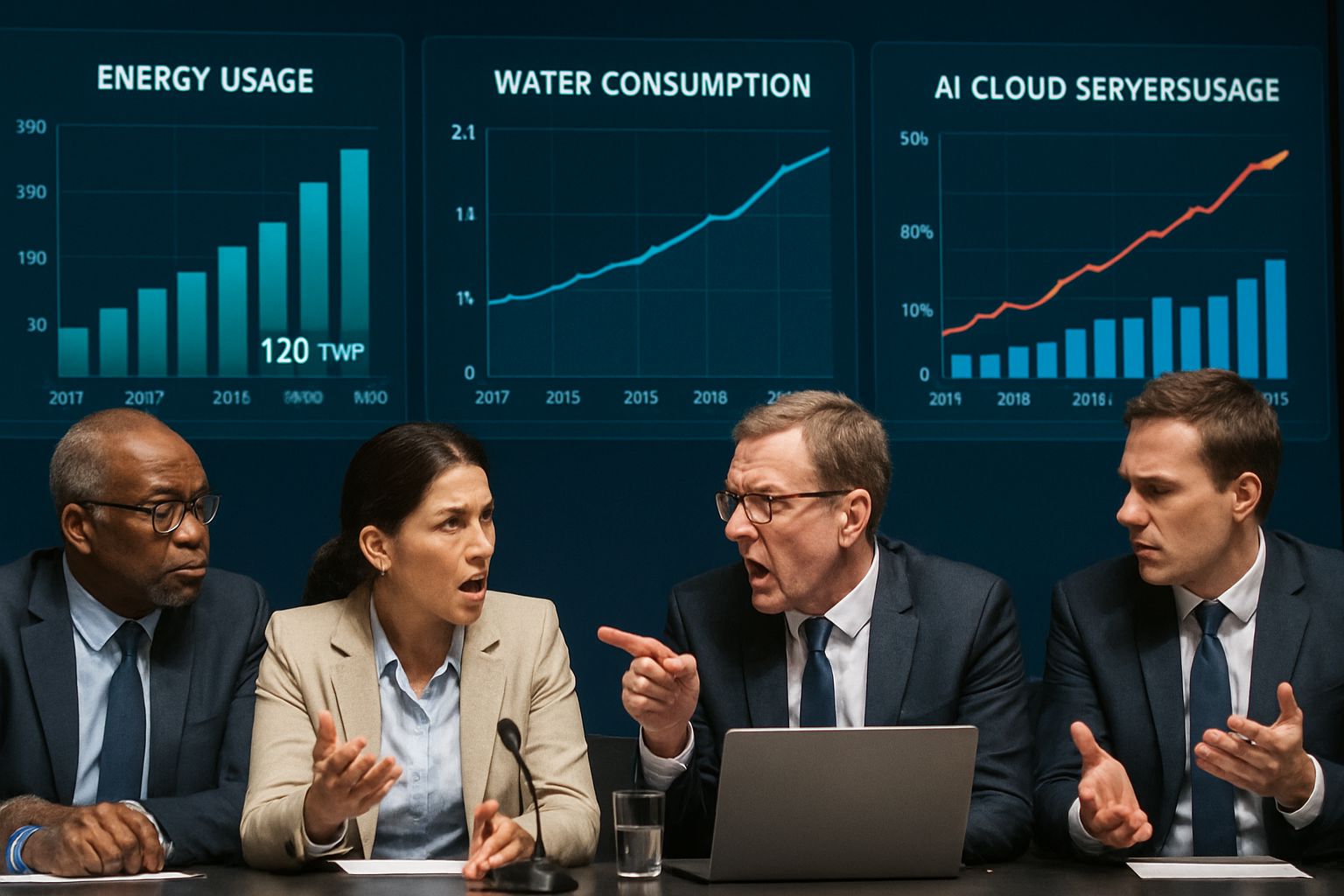
AI CERTS
13 hours ago
COP30 Debate Highlights AI Energy Footprint Concerns
Inside COP30 Impact Debates
Speakers traded numbers, anecdotes, and accusations. Fatih Birol warned that policy choices will shape AI’s trajectory. Meanwhile, campaigner Holly Alpine lambasted tech–oil alliances. Furthermore, Brazil announced a Climate Artificial Intelligence Institute to aid developing nations. Nevertheless, researchers demanded rigorous metrics before celebration. The phrase AI Energy Footprint echoed through corridors ten times during day one, signaling urgency.

These exchanges revealed deep divides on measurement and accountability. However, they also surfaced shared interest in standards. The atmosphere set the stage for detailed energy forecasts.
Debate intensity underscores political stakes. Consequently, analytical clarity became essential before further pledges.
Crunching Future Demand Projections
The IEA projects data-centre electricity use may hit 945 TWh by 2030. Additionally, analysts link most growth to AI workloads. In contrast, 2024 consumption stood near 415 TWh. That jump would equal the electricity draw of Japan. Therefore, grid planners in the United States and China face daunting upgrades.
IEA High Growth Scenario
Under the high case, U.S. data-centre demand could drive half of national load growth. Moreover, water-cooled hyperscalers may proliferate near cheap power nodes. Critics say the expanding AI Energy Footprint threatens climate targets unless clean supply scales faster.
- 415 TWh global data-centre electricity in 2024
- 945 TWh possible by 2030 under current policies
- 183 TWh U.S. share during 2024
These figures sharpen policy focus. Subsequently, attention shifted to regional water stress.
Water Stress Hotspots Rising
Lawrence Berkeley Lab estimates U.S. centres used 17 billion gallons for cooling in 2023. Furthermore, indirect withdrawals multiply that footprint via power-plant operations. Consequently, communities near drought-prone regions fear shortages. Austin, Phoenix, and Las Vegas now demand detailed resource studies before approvals.
Experts note that carbon-aware training schedules can slash peak-hour water demand. Moreover, green AI optimization strategies include shifting workloads to cooler nights. Nevertheless, rebound effects can erode savings as usage grows.
Local case studies expose human impacts. However, broader lifecycle gaps also hinder full accountability.
Lifecycle Footprint Blind Spots
Academic LCAs reveal surprising numbers. One language-model family emitted 493 tons CO2e during development alone. Additionally, millions of liters of water were consumed across chip production and testing. Training versus inference choices matter, yet hardware manufacture often dominates.
Training Versus Inference Load
Training remains energy-intensive but occurs once. Meanwhile, inference happens billions of times. Consequently, policy must tackle both stages. Carbon-aware training can shift demand to renewable surpluses. Similarly, green AI optimization techniques prune model size without accuracy loss.
Lifecycle insights broaden the AI Energy Footprint discussion. Subsequently, negotiators turned to reporting frameworks.
Toward Unified Impact Metrics
Researchers, NGOs, and industry proposed common dashboards. SumEarth.AI showcased an open prototype aggregating energy, water, and emissions data. Moreover, many speakers urged that PUE alone is outdated. Therefore, new metrics must integrate manufacturing, cooling, and grid mix.
Google’s sustainability lead supported transparent disclosures. However, some firms resisted mandatory rules, citing trade secrets. Nevertheless, consensus grew around phased reporting starting 2027.
Clear metrics promise comparability across sites. Consequently, policy debate shifted to risk–benefit balancing.
Balancing Promise And Risk
Proponents highlighted AI for grid forecasting, crop optimization, and material discovery. Additionally, Brazil’s $2.8 billion open-source agricultural model attracted support. Critics countered that marketing AI to oil majors contradicts climate goals.
Many experts endorsed a dual path: deploy climate-positive use cases while curbing harmful growth. Furthermore, professionals can enhance skills via the AI+ Design™ certification to build efficient systems. Adopting green AI optimization and carbon-aware training together can halve operational emissions, according to early pilots.
Balanced governance can unlock benefits. Subsequently, attention moved toward concrete next steps.
Conclusion And Next Steps
COP30 exposed the scale and complexity of the AI Energy Footprint debate. Moreover, rising electricity and water demand challenge net-zero pathways. Nevertheless, standardized metrics, green AI optimization, and carbon-aware training offer credible mitigation routes. Stakeholders must act swiftly, align incentives, and enforce transparent reporting. Consequently, professionals should deepen expertise and lead responsible deployments. Explore the linked AI+ Design™ program to stay ahead and drive sustainable innovation.



